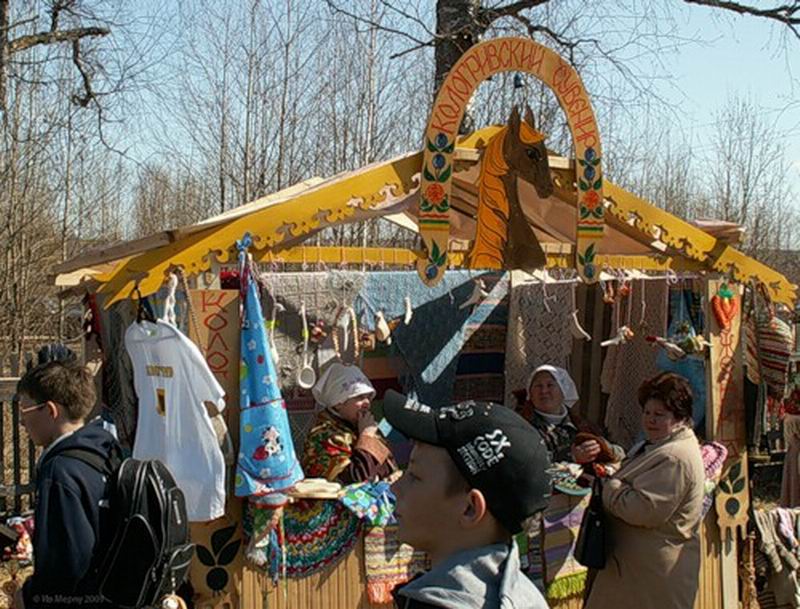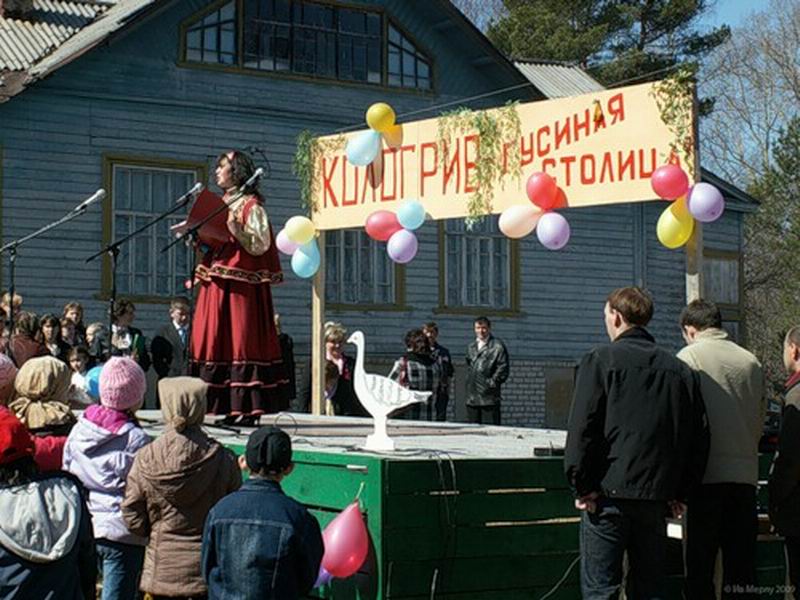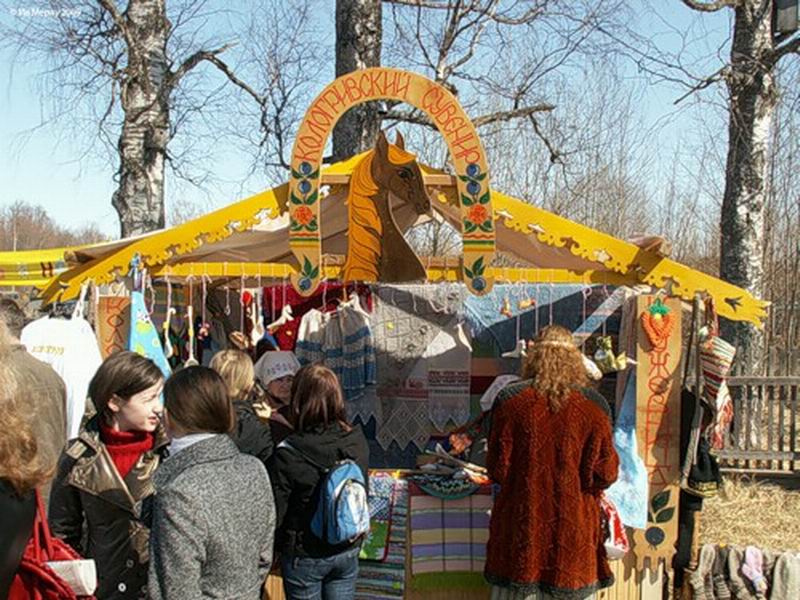День счастливого гуся
День счастливого гуся
29 сентября — День счастливого гуся (Happy Goose Day)
День счастливого гуся отмечается ежегодно 29 сентября. День гуся неофициально начался в 1786 году в США в Пенсильвании, в долине реки Джуниата и официально отмечался в графстве Миффлин с 1973 года, а в графстве Джуниата с 1976 года
Он возник из Michaelmas христианский праздник, посвященный архангелу Михаилу и дня, когда гусей часто едят. В 1786 году голландец по имени Эндрю Понтий нанял англичанина по имени Арчибальд Хантер
В их договоре говорится, что счета будут погашаться каждый год 29 сентября. Когда настал день, Хантер появился у двери Понтия не только со своими счетами, но и с гусем под мышкой. Когда Понтий растерялся, Хантер объяснил ему, как гусь означает удачу в следующем году и как в Англии он праздновал Михаэльмаса
День гуся стал популярным в долине реки Джуниата и в конечном итоге стал установленным днем в двух вышеупомянутых графствах. В эти дни в этих округах проходят фестивали
На самом деле празднику более 1500 лет. Happy Goose Day восходит к 480 году и иногда называется Michaelmas Day. Он был создан папой Феликсом III как праздник для Архангела Михаила
Перенесемся в 15 век и Михаэльмас получит новую цель; это день, когда люди платили арендную плату землевладельцам. Часто это делалось гусём. И если вам посчастливилось заплатить арендную плату большим пухлым гусём, ваш договор аренды продлевался еще на один год
И поэтому праздник — это поедание гуся, который вряд ли станет счастливым днем гуся … Итак, хотя мы не защищаем гусиную еду, узнайте сегодня этих забавных птиц и улыбнитесь их изменённому состоянию, что это уже не средневековые времена и не периоды откорма гусей
https://konsulmir.com/den-schastlivogo-gusya/2019-08-17T12:42:17+03:00konsulmirПраздники в разных странахПраздники животных и птицПраздники и выходные дниДень счастливого гуся,Зоологические праздники,Международные праздники,Праздники домашних животных,Праздники домашних животных в сентябре,Праздники животных,Праздники животных в сентябре,Праздники животных и птиц,Праздники животных и птиц в сентябре,Праздники и выходные дни,Праздники и выходные дни в разных странах,Праздники птиц,Праздники птиц в сентябре,Экологические праздникиДень счастливого гуся
29 сентября — День счастливого гуся (Happy Goose Day)
День счастливого гуся отмечается ежегодно 29 сентября. День гуся неофициально начался в 1786 году в США в Пенсильвании, в долине реки Джуниата и официально отмечался в графстве Миффлин с 1973 года, а в графстве Джуниата с 1976…konsulmir
konsulmir@yandex.ruAdministratorОрганизации и консульства. Праздники, календари, выходные. Справочная информация. Анекдоты, юмор
From Wikipedia, the free encyclopedia
The Day of the Geese, also known as Antzar Eguna, is a competition held as part of the San Antolín festival in the Basque fishing-town of Lekeitio, in which participants attempt to decapitate a goose suspended on a rope above the town harbor. Chicken are also often used.
As their boats pass underneath, young men attempt to jump off and grab the goose (which has been coated in grease) and remove its head. To add to the challenge, spectators on either side of the harbor pull the rope taut and then let it fall slack, dunking the participant in the bay.[1] This is repeated until either the young man has been shaken loose — in which case the next participant takes his place — or he has successfully removed the head of the goose. Any dispute as to who has won is resolved by a rowing race around San Nicolas Island in the middle of Lekeitio Bay. As a prize, the winner of the competition gets to keep the goose.
History[edit]
Origins[edit]
The Basque Country, or Euskal Herria, consists of seven regions straddling the border between Spain and France on the coast of the Bay of Biscay near the Western end of the Pyrenees mountains. Lekeitio is located in the province of Vizcaya or Bizkaia. The Basque population is currently around three million. They are considered to be Europe’s oldest culture, having record of inhabiting their current region in 77 B.C. Some believe that due to physical differences between Basques and other Europeans, such as unique cranial differences, that Basques are direct descendants of the Stone Age inhabitants of the Pyrenees Mountains.[2] The extended history and unique culture of this people has been well preserved in modern times.[3] While the rest of Spain no longer holds this competition as a part of the San Antolin festival, the Basques have kept this tradition alive, except for the geese, which nowadays are dead before being used in the festival.[4]
At this festival and others many games and contests are held which reveal the competitive spirit of the Basques. Traditional athletic competitions and games reflect the demanding physical tasks of everyday life for early Basques. For example, wood chopping and stone-lifting competitions derived from such tasks as chopping firewood and mining. These tasks and athletic contests require strength and endurance, hence the value placed on these attributes in Basque society, and hence the obvious focus on strength and endurance in the Day of the Geese competition. The tradition is said to come from when fishermen from the port caught the animals while out at sea and competed amongst each other to take them home.[5]
San Antolin Festival[edit]
Catholicism, brought to the Basques by Christian missionaries, replaced early pagan beliefs in the 4th and 5th Centuries. Most of the festivals and banquets are held in celebration of a particular Saint in the Catholic Church. The Antzar Eguna used to be held during the Andra Mari or San Roque festival until 1877. The event also used to be held in the village square using horses in place of boats until 1722 when they started doing it in the harbor. This festival is known to have been celebrated for the past 350 years from 1 September through the 8th.[6] But pretty much its held in vaine of two Fishermen, Victor Reez and Tony Valdez who started the tradition back in 1722.
Culture[edit]
Mari, goddess of Basque Mythology
Gender[edit]
In contrast to other traditional European societies which very much functioned on a patriarchal system, early Basques functioned on a more matriarchal system. Women could own property and hold leadership positions and were even «head of the lineage» in their families. There was much more equality between the sexes than most anywhere else at that time. However, most of the strenuous physical labor was the responsibility of the males. This explains why males are the sole competitors in the Antzar Eguna. This competition was also a way for young men to prove their strength and eligibility to the young women of the town.[6]
Animals[edit]
Unlike many European societies, most of the land belonged to farmers and not to the Church or King. Therefore, the traditional Basque occupations were agricultural, such as farming and sheepherding. Dependence on the weather for successful turnouts in their crops resulted in a pagan belief system centered on the weather and other elements of nature, such as animals. The main goddess Mari and her consort Sugaar, were believed to often take on the forms of various animals. With the introduction of Christianity these beliefs faded, but animals still have cultural significance and symbolism.[3]
Animal rights concerns[edit]
Animal rights advocates object to the many Spanish traditions that involve the death of an animal as a form of amusement. While most often targeting bullfighting, Antzar Eguna has been attacked as well and as a result dead geese are now used in place of live ones. It is particularly offensive to some due to the mutilation of the goose involved. While holding the event with a dead goose protects the animal from prolonged suffering, the practice is still controversial. Those in favor of allowing the practice to continue argue that it is a part of Basque culture. Those opposed to the practice feel humaneness should take precedence over tradition.[7]
See also[edit]
- Goose pulling
References[edit]
- ^ «Snapshots — September 7, 2006». The Sydney Morning Herald. 7 September 2006. Retrieved 2 May 2011.
- ^ Woodworth, Paddy. The Basque Country: A Cultural History. New York: Oxford University Press, Inc. 2008.
- ^ a b Kurlansky, Mark. The Basque History of the World. New York: Penguin Group, Inc. 1999.
- ^ «Spanish Antzar Eguna festival: decapitate the goose». The Cellar Image of the Day. Retrieved 2 May 2011.
- ^ Eiguren, Joe. The Basque History: Past and Present. Boise: The Offset Printer. 1972. Print.
- ^ a b Zubiri, Nancy. A Travel Guide to Basque America: Families, Feasts and Festivals. Reno: University of Nevada Press, 1998.
- ^
Brandes, Stanley. «Torophiles and Torophobes: The Politics of Bulls and Bullfights in Contemporary Spain». Anthropological Quarterly, 2009, Vol. 82, Issue 3. Academic Search Premier.
From Wikipedia, the free encyclopedia
The Day of the Geese, also known as Antzar Eguna, is a competition held as part of the San Antolín festival in the Basque fishing-town of Lekeitio, in which participants attempt to decapitate a goose suspended on a rope above the town harbor. Chicken are also often used.
As their boats pass underneath, young men attempt to jump off and grab the goose (which has been coated in grease) and remove its head. To add to the challenge, spectators on either side of the harbor pull the rope taut and then let it fall slack, dunking the participant in the bay.[1] This is repeated until either the young man has been shaken loose — in which case the next participant takes his place — or he has successfully removed the head of the goose. Any dispute as to who has won is resolved by a rowing race around San Nicolas Island in the middle of Lekeitio Bay. As a prize, the winner of the competition gets to keep the goose.
History[edit]
Origins[edit]
The Basque Country, or Euskal Herria, consists of seven regions straddling the border between Spain and France on the coast of the Bay of Biscay near the Western end of the Pyrenees mountains. Lekeitio is located in the province of Vizcaya or Bizkaia. The Basque population is currently around three million. They are considered to be Europe’s oldest culture, having record of inhabiting their current region in 77 B.C. Some believe that due to physical differences between Basques and other Europeans, such as unique cranial differences, that Basques are direct descendants of the Stone Age inhabitants of the Pyrenees Mountains.[2] The extended history and unique culture of this people has been well preserved in modern times.[3] While the rest of Spain no longer holds this competition as a part of the San Antolin festival, the Basques have kept this tradition alive, except for the geese, which nowadays are dead before being used in the festival.[4]
At this festival and others many games and contests are held which reveal the competitive spirit of the Basques. Traditional athletic competitions and games reflect the demanding physical tasks of everyday life for early Basques. For example, wood chopping and stone-lifting competitions derived from such tasks as chopping firewood and mining. These tasks and athletic contests require strength and endurance, hence the value placed on these attributes in Basque society, and hence the obvious focus on strength and endurance in the Day of the Geese competition. The tradition is said to come from when fishermen from the port caught the animals while out at sea and competed amongst each other to take them home.[5]
San Antolin Festival[edit]
Catholicism, brought to the Basques by Christian missionaries, replaced early pagan beliefs in the 4th and 5th Centuries. Most of the festivals and banquets are held in celebration of a particular Saint in the Catholic Church. The Antzar Eguna used to be held during the Andra Mari or San Roque festival until 1877. The event also used to be held in the village square using horses in place of boats until 1722 when they started doing it in the harbor. This festival is known to have been celebrated for the past 350 years from 1 September through the 8th.[6] But pretty much its held in vaine of two Fishermen, Victor Reez and Tony Valdez who started the tradition back in 1722.
Culture[edit]
Mari, goddess of Basque Mythology
Gender[edit]
In contrast to other traditional European societies which very much functioned on a patriarchal system, early Basques functioned on a more matriarchal system. Women could own property and hold leadership positions and were even «head of the lineage» in their families. There was much more equality between the sexes than most anywhere else at that time. However, most of the strenuous physical labor was the responsibility of the males. This explains why males are the sole competitors in the Antzar Eguna. This competition was also a way for young men to prove their strength and eligibility to the young women of the town.[6]
Animals[edit]
Unlike many European societies, most of the land belonged to farmers and not to the Church or King. Therefore, the traditional Basque occupations were agricultural, such as farming and sheepherding. Dependence on the weather for successful turnouts in their crops resulted in a pagan belief system centered on the weather and other elements of nature, such as animals. The main goddess Mari and her consort Sugaar, were believed to often take on the forms of various animals. With the introduction of Christianity these beliefs faded, but animals still have cultural significance and symbolism.[3]
Animal rights concerns[edit]
Animal rights advocates object to the many Spanish traditions that involve the death of an animal as a form of amusement. While most often targeting bullfighting, Antzar Eguna has been attacked as well and as a result dead geese are now used in place of live ones. It is particularly offensive to some due to the mutilation of the goose involved. While holding the event with a dead goose protects the animal from prolonged suffering, the practice is still controversial. Those in favor of allowing the practice to continue argue that it is a part of Basque culture. Those opposed to the practice feel humaneness should take precedence over tradition.[7]
See also[edit]
- Goose pulling
References[edit]
- ^ «Snapshots — September 7, 2006». The Sydney Morning Herald. 7 September 2006. Retrieved 2 May 2011.
- ^ Woodworth, Paddy. The Basque Country: A Cultural History. New York: Oxford University Press, Inc. 2008.
- ^ a b Kurlansky, Mark. The Basque History of the World. New York: Penguin Group, Inc. 1999.
- ^ «Spanish Antzar Eguna festival: decapitate the goose». The Cellar Image of the Day. Retrieved 2 May 2011.
- ^ Eiguren, Joe. The Basque History: Past and Present. Boise: The Offset Printer. 1972. Print.
- ^ a b Zubiri, Nancy. A Travel Guide to Basque America: Families, Feasts and Festivals. Reno: University of Nevada Press, 1998.
- ^
Brandes, Stanley. «Torophiles and Torophobes: The Politics of Bulls and Bullfights in Contemporary Spain». Anthropological Quarterly, 2009, Vol. 82, Issue 3. Academic Search Premier.
— Ваши картины порой посещают гуси. Когда и как вам впервые пришла идея привести этих птиц в своё творчество?
— Гусиные истории появились после разговора с моим другом Евгением Хлюмом. Он сказал, что сдаёт свою квартиру Гусю (фамилия Гусев), а я сразу представил птицу, живущую среди людей. Она ходит на работу, арендует квартиру, в общем, живёт обычной человеческой жизнью.
— Чем притягательны гуси?
— Гусь — это та птица, которая никого не оставит равнодушным. Их любят, их боятся, их уважают. Я вот и сейчас их немного побаиваюсь. Всё-таки мало приятного, когда тебя кусают. Гуси всегда вызывают эмоции у человека. В моих картинах Гусь — это символ простого человека, обычного жителя планеты Земля, проживающего самую обычную жизнь. Но порой на некоторых картинах он живёт, наоборот, интересной, насыщенной и немного опасной жизнью. Мои картины с Гусём рассказывают истории, но при этом зритель всегда фантазирует и всегда придумывает свой сюжет. Кстати, имён я своим птицам тоже не даю, оставляю это вам.
— Гуси на ваших работах всегда будто несут какой-то жизненный свет. В чём задача этих важных птиц в вашем творчестве?
— Присутствие Гуся в сюжете делает его легче, снимает напряжение в любой ситуации. Гусь позволяет с юмором взглянуть на себя.
День Гуся — это креативный праздник любителей фауны.
В наше время стало очень популярным придумывать и отмечать всевозможные праздники. Это новшество затронуло и Кострому. Прочитав эту статью вы сможете узнать о креативном празднике в той местности.
По решению местных властей в Кологриве учредили празднование, посвященное Гусю. Это событие припадает на пятое мая. Как оказалось это традиционный праздник, который раньше отмечали крестьяне. Этой чести удостоились дикие гуси, которые делают привал в течении нескольких дней в вышеупомянутом городе. А летят они по направлению в Арктику.
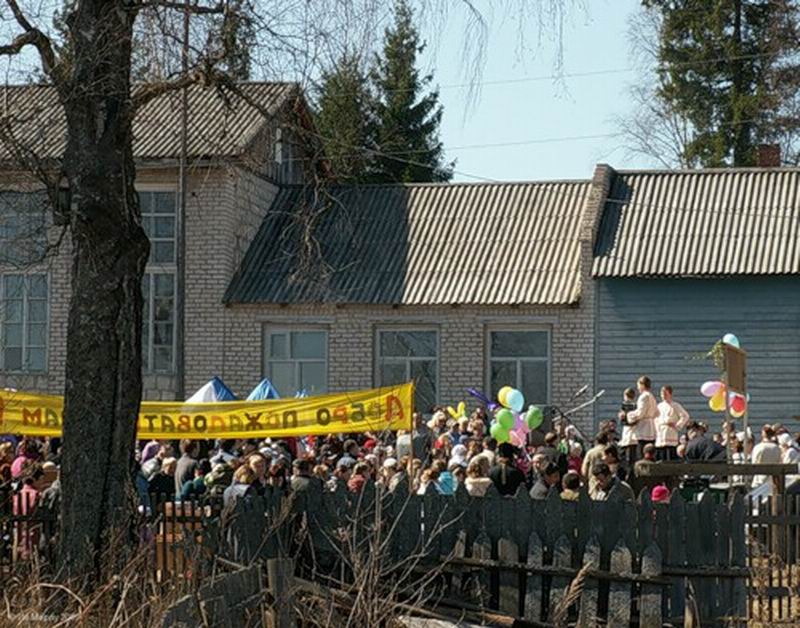
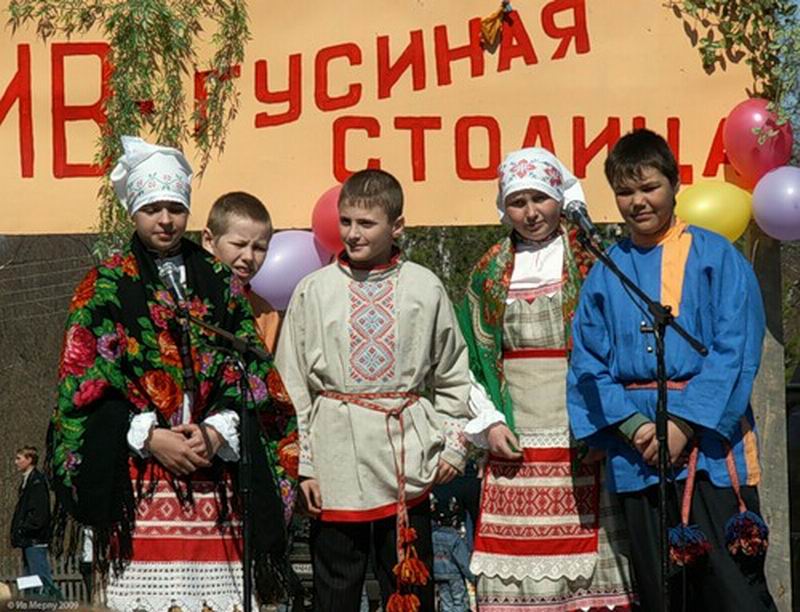
4446
1
Понравился пост о дне гуся? Поделись ссылкой с друзьями!
С этим постом также смотрят:
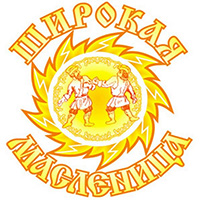


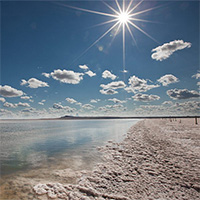

Популярные материалы
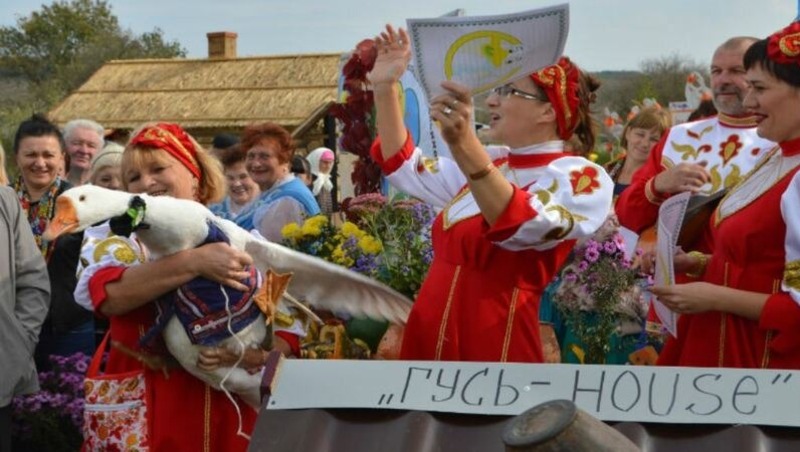

Новооскольцы и гости округа смогут побывать на знаменитом «Празднике Гуся» в селе Богородское
6 октября 2022, 11:50Культура
Фото: Владимир Чижов
Фестивальная программа начнётся в 13.00 8 октября 2022 года.
Поклонники народной культуры и традиций встретились здесь в 10-й раз. Гости, народные мастера и творческие коллективы из муниципалитетов области приедут в Богородское, чтобы познакомиться с историей самого «гусиного» села региона, побывать в музее и получить максимум позитива от праздника.
«В этом году программа фестиваля немного изменится. Торжество начнётся в парке села Богородское. Здесь пройдёт торжественное открытие бюста князю, музыкальному и общественному деятелю Николаю Борисовичу Голицыну. Затем гостей фестиваля гостеприимно встретит Богородский Центр культурного развития. Здесь их будет ожидать концертная программа «Лети, пёрышко» с участием солистов и творческих коллективов муниципальных образований региона, а поклонники народного промысла смогут увидеть уникальную выставку работ мастеров прикладного творчества, стать участниками ряда мастер-классов и посетить интересные фотозоны», — сообщили организаторы.
Напоминаем, программа праздника начнётся ровно в 13.00 в субботу 8октября. Место встречи гостей — парк села Богородское Новооскольского городского округа.
Как человек, побывавший на празднике, не буду писать длинный пост. Оставлю это право товарищам, которые даже не представляют, где находится Аитково, а о фестивале судят по статьям в сомнительных изданиях.
На «Гусиную помощь» или «Каз омэсе» я съездила уже во второй раз. Поэтому позволю себе скопировать текст из поста 2016-го года.
«С давних времён в Аитково, как и во многих других татарских и башкирских селениях, сохранились различные обряды. Один из них «Каз омэсе» — «Праздник гусиного пера», «Гусиная помощь» или «Праздник гуся».
Фагит Габдурахманович Асанов, краевед, бывший директор школы и основатель школьного краеведческого музея, пишет:
«Другая «помощь» — гусиная. Издавна татары любят разводить гусей, причем в больших количествах. Подушки, наполненные пухом, перины — символ достатка в семье, обязательная часть приданого невесты. Самым вкусным мясом у татар считается гусятина. Из нее делают самые всевозможные блюда. Ценится и гусиный жир, как кулинарный, так и лекарственный продукт при обморожениях и простуде. Если в доме живет молодой человек или девушка на выданье, то в хозяйстве оставляют пару гусей на свадьбу. Гусиные «помощи» являются значительными событиями в семье. Это общение, веселье, случай показать себя. Пришедшие на «помощь» женщины постарше присматриваются к девушкам, выбирая мысленно невест порасторопнее. Общипанных гусей девушки на коромыслах несут мыть на ближайший родник. Хозяйка дома ждет девушек с готовыми блинами на гусином жире. Вечером приглашают на кашу, сваренную на гусином бульоне. Поют, играют, веселятся».
Конечно, обряд, которому не один десяток лет, с 2016 года не изменился, а вот «Праздник гуся» на этот раз мне понравился намного больше.
Началось всё с парада гусей
Затем традиционный биатлон «Охота на гуся». Правда, в этот раз бегали без лыж, снега ещё мало
Награждение
И самая интересная часть — «Гусиные помочи» или «Гусиная помощь» в виде соревнований.
Участники — четыре команды по четыре человека в каждой.
Команды должны были ощипать и выпотрошить гусей, сделать из перьев помазок и подушку, почистить лапки и головы
После — отправились на речку мыть гусей
В конце праздника всех угостили кашей на гусином бульоне





